Intellectual Made by Akcome
the Birth of Efficient Solar Module
From a piece of crystalline silicon solar cell to a complete high-efficiency photovoltaic module, a plurality of complicated processes such as cell cutting, welding, laminating, impressing, appearance inspection and EL test, IV test, finished product inspection and the like are required. In this episode of Kangkang class, we will take you into the Akcome high-efficiency module intelligent manufacturing workshop to understand the production process and flow of Akcome high-efficiency photovoltaic module in detail.
01 Cell Cutting
In order to meet the requirements of different module types and process technologies, a laser scribing machine is required to cut the crystalline silicon cells with different sizes to form smaller units. In the cell cutting process, Akcome mainly adopts the nondestructive cutting technology, and uses the laser nondestructive scribing machine to cut the cell into half and three pieces. Compared with the traditional lossy process, the nondestructive cutting technology can effectively prevent the micro cracks on the cut section and reduce the risk of cross crack after welding and laminating.
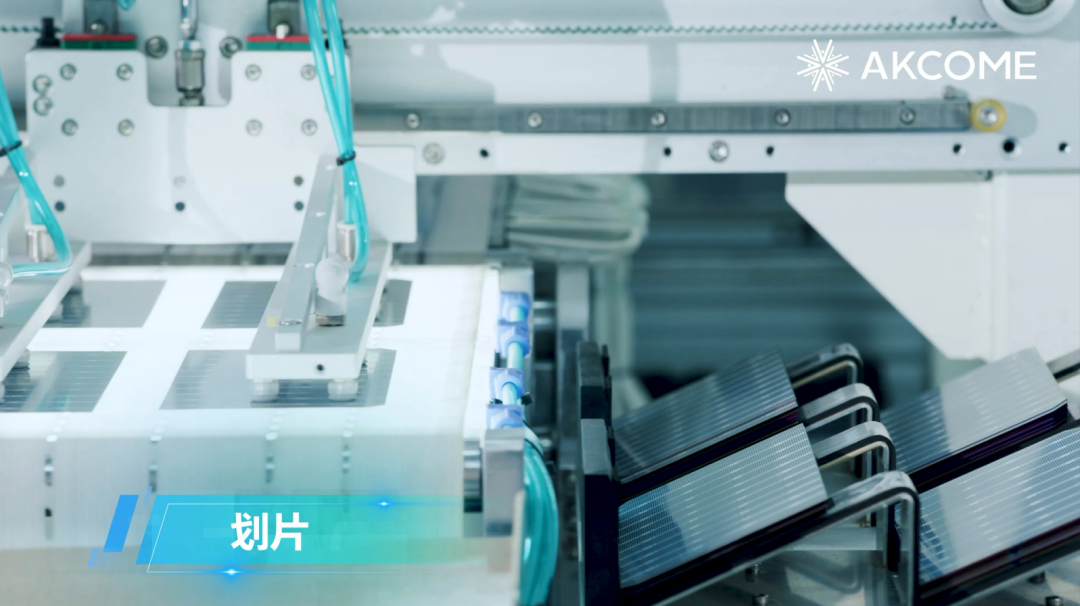
02 Cell string welding
Welding is one of the key links in the module production process. By using the precise positioning and infrared heating principle of a welding machine, the positive electrode and the negative electrode of the cell are connected in series with the interconnection welding belt to form the cell string. The power generation performance of the modules will be affected by such problems as the offset of the welding band, the incomplete welding and the over-welding. Therefore, higher requirements are put forward for the positioning accuracy and the welding quality during the welding process.
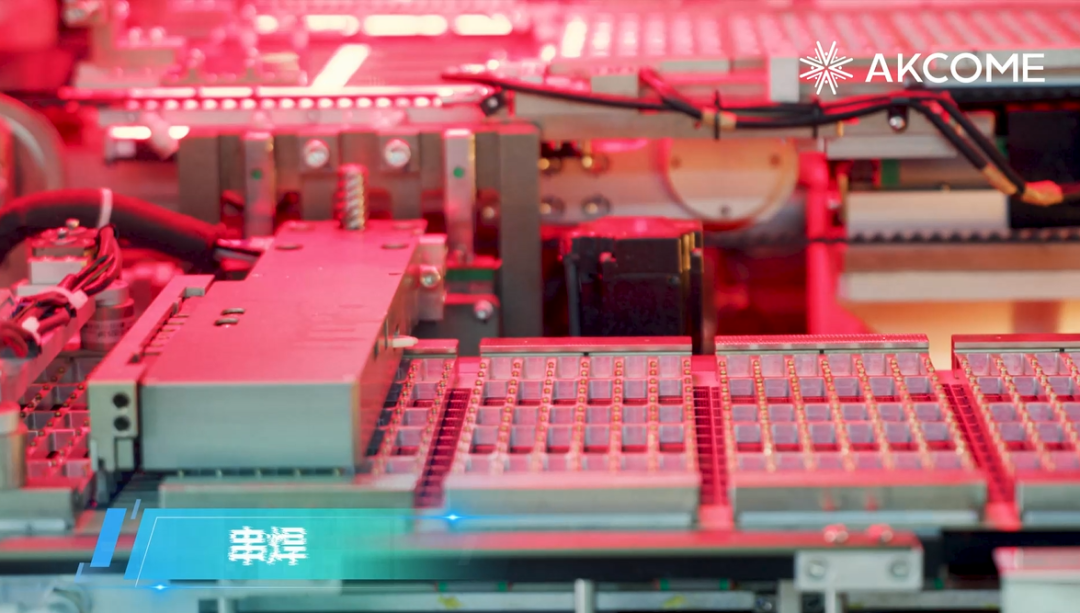
03 Automatic layout
According to different module types, the cell strings output by the welding machine are orderly arranged by the automatic typesetting machine so as to prepare for the next overlapping welding process.
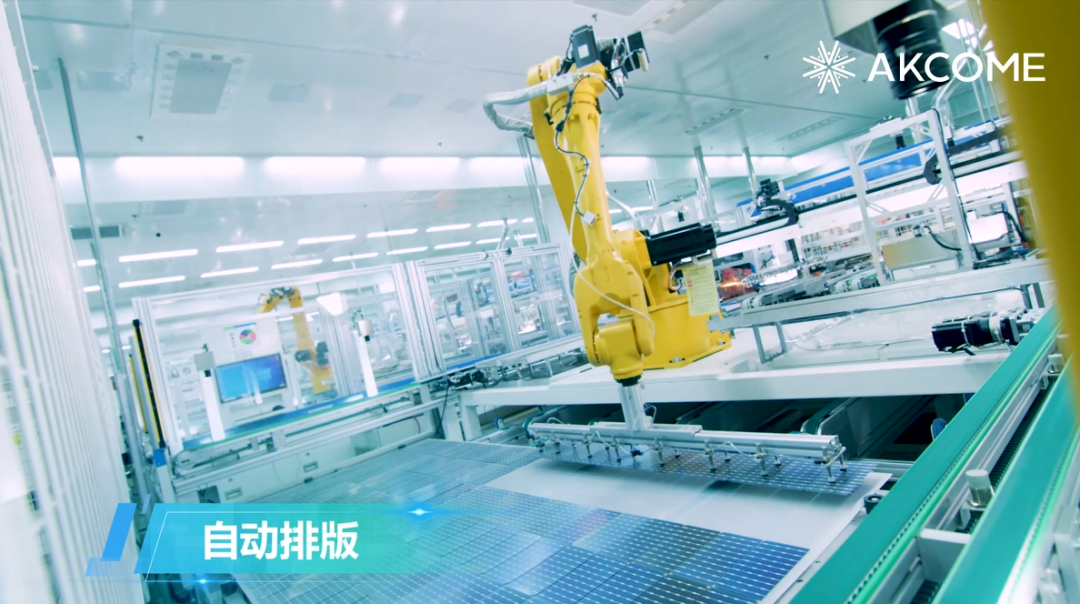
04 Bus strip welding
An automatic overlapping welding machine is used for welding the head end and the tail end of the cell strings after typesetting by using a bus belt so as to complete the parallel connection between the cell strings and realize the circuit common connection of the whole module.
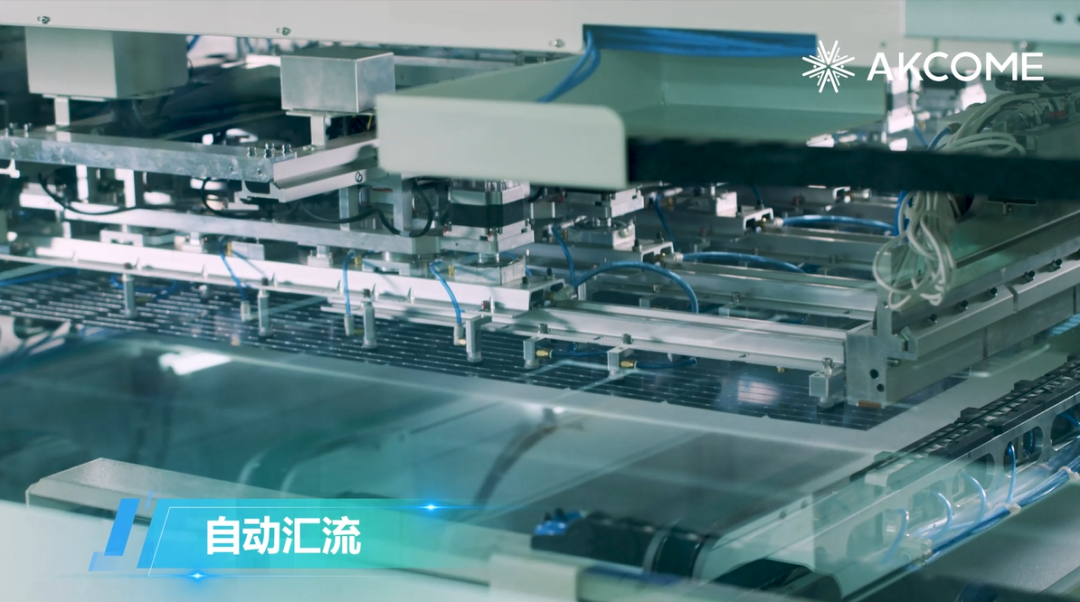
05 Laying of encapsulating materials
By laying packaging materials such as EVA and POE between the cell, glass, and backsheet, and melting them at high temperature and pressure, the silicon wafers protect and insulate the cells to prevent water vapor and oxygen from infiltration and pollution, thus improving the service life and conversion efficiency of the modules.
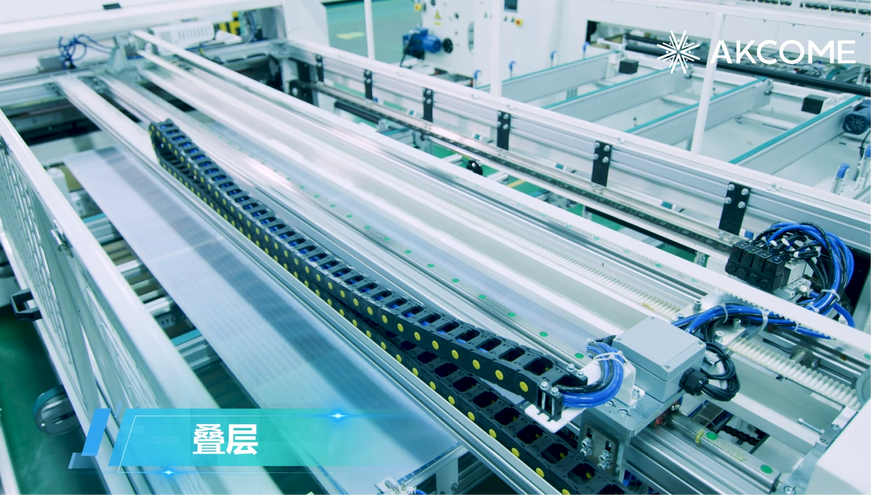
06 Laying of glass and backsheet
The aforementioned cells and materials are encapsulated inside by glass and backsheet. The glass and the backboard are the outermost materials directly in contact with the external environment, not only can play a role in supporting and protecting, but also have reliable insulation, water resistance and aging resistance, and are the key to ensure the conversion efficiency of the solar module for a long time.
Through the steps above, the front glass, the front packaging material, the cell pack, the back packaging material and the backboard/back glass are stacked in sequence from bottom to top, and after the auxiliary procedures of appearance inspection, repair, double glass edge banding and the like are completed, the glass is sent to the next lamination link.
07 Laminating
In order to ensure the mechanical strength and durability of the solar module, the module shall be laminated. The laid laminated parts are sent to the laminating machine. After being vacuumed, heated and pressurized by the laminating machine, the adhesive film is melted and tightly bonded with the cell, glass and backsheet to form a whole.
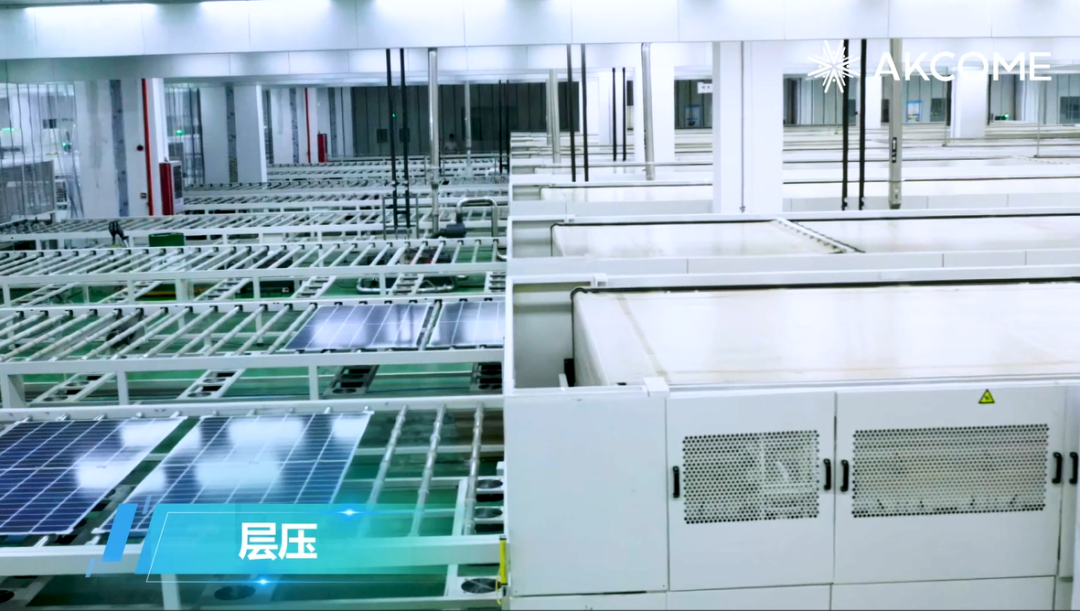
08 Trimming,framing and junction box installation
An automatic edge cutting machine is used for automatically trimming the laminated modules, and the redundant backsheet and EVA residual glue are removed.
The framing step refers to sealing and protecting the edges of the assembly with an aluminum bezel and silicone. According to the method, automatic picking, automatic gluing and automatic installation of the solar frame can be realized, so that the safety and the strength of the module are improved, and later engineering installation is facilitated.
The junction box is installed to connect and protect the solar module and conduct the current generated by the solar module for the user. By manually installing terminal boxes, and then automatically welding the terminals of terminal boxes and the outgoing cables by machine, human errors can be reduced and welding quality can be improved.
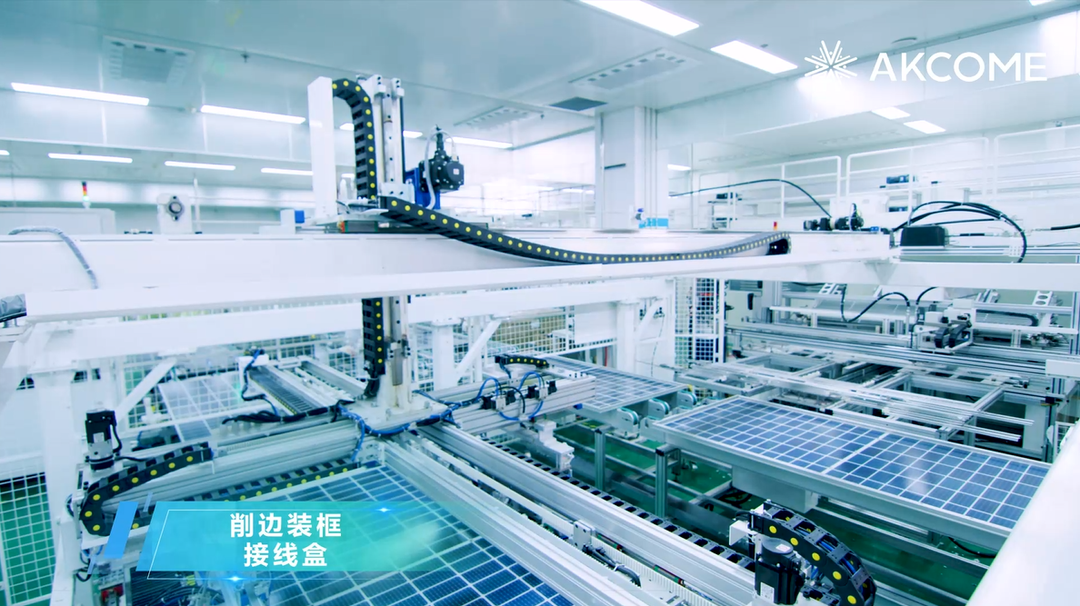
09 Curing and cleaning
The process is conducted in the curing chamber, and the curing hardness and the curing depth of the sealant of the module can be controlled by controlling the temperature, the humidity and the time of the module in the curing chamber so as to ensure the performance of the module.
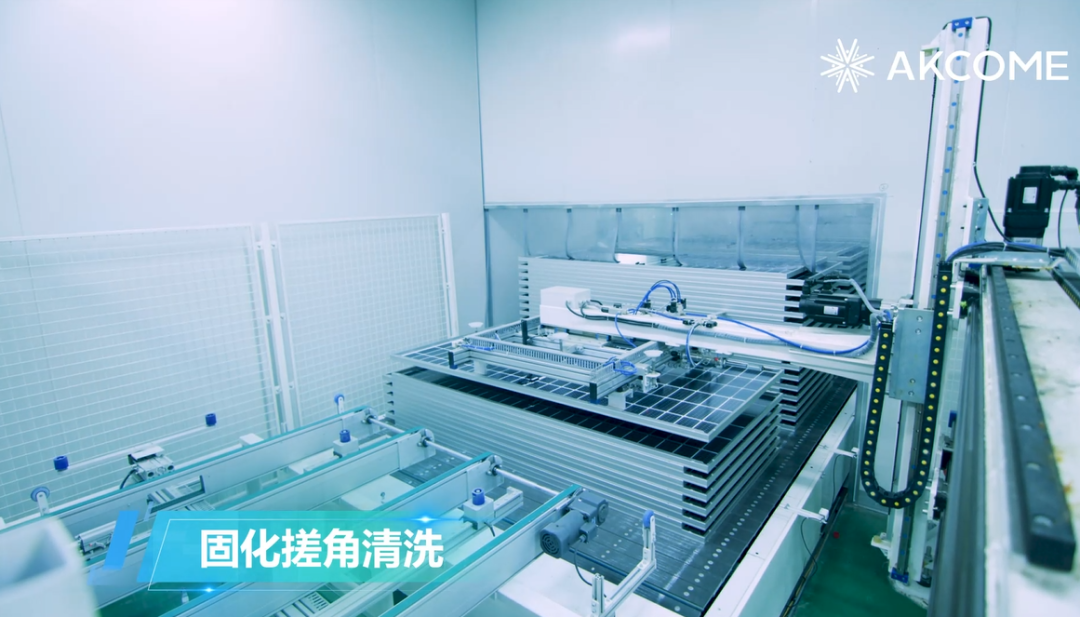
10 Testing and Inspection
In the production process of modules, multiple rounds of test and inspection, such as IV test, EL test and appearance inspection, etc. are used to inspect the production yield of modules in each link so as to timely repair the defective modules.
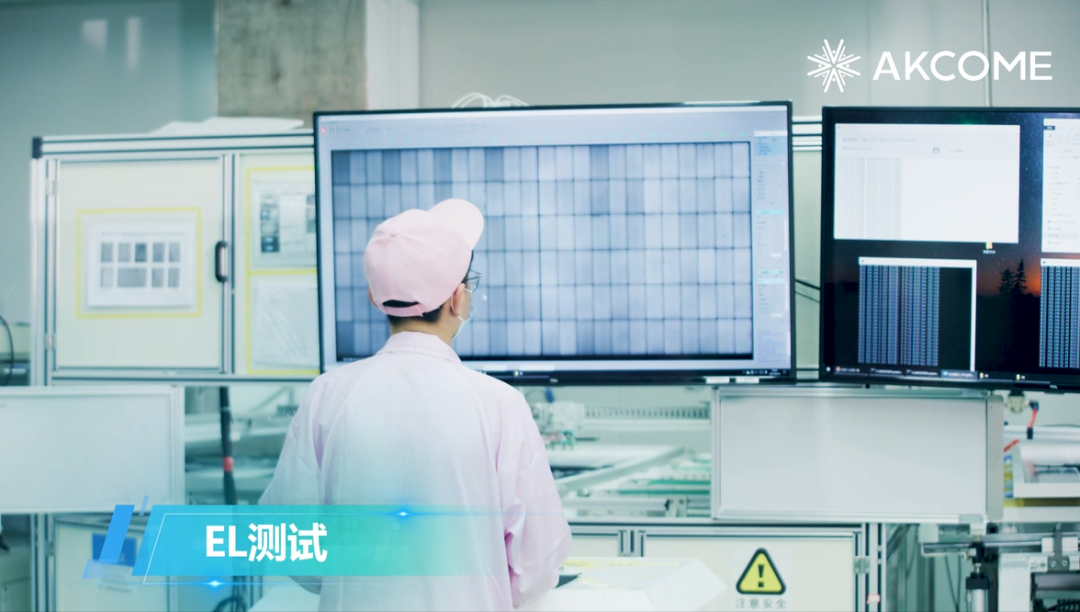
11 Classified, packing and storage
According to the test results of the power, current and efficiency of the modules, the MES system carries out gear allocation on the modules, and uniformly packages and stores the modules at the same gear.
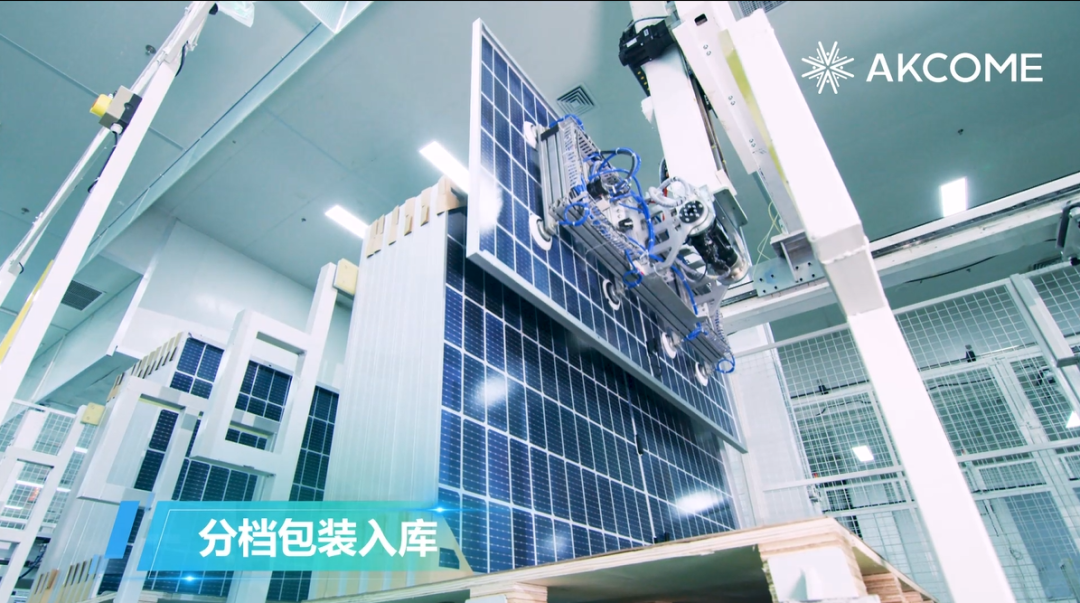
The details show ingenuity. The above is only part of the production process of Akcome’s high-efficiency solar modules and every module manufactured by Akcome, from cell to the finished product, must go through 31 production procedures and multiple rounds of quality inspection and testing. All the modules are responsible and controlled layer by layer to ensure that the product quality reaches the high-quality standard.
For 17 years of deep cultivation in the photovoltaic industry, Akcome has always regarded “creating and leading the new value of high-efficiency photovoltaic” as the foothold of the enterprise, and adheres to the creative spirit of pursuing excellence, the spirit of ingenuity and the supreme service spirit for customers. In the future, Akcome will continue to innovate and create a photovoltaic product matrix and service model for different people and covering multiple scenes to comprehensively meet the diversified and differentiated demands of global customers.
Horário de atendimento: 8: 00-17: 00 em dias úteis
HQ: 0571-89089399
Sales: +86-512 8255 7328
Mail: modulesales@akcome.com
Sede: Sala 901, Edifício 1, No. 1818-2, Wenyi West Road, Rua Yuhang, Distrito de Yuhang, Cidade de Hangzhou, Província de Zhejiang